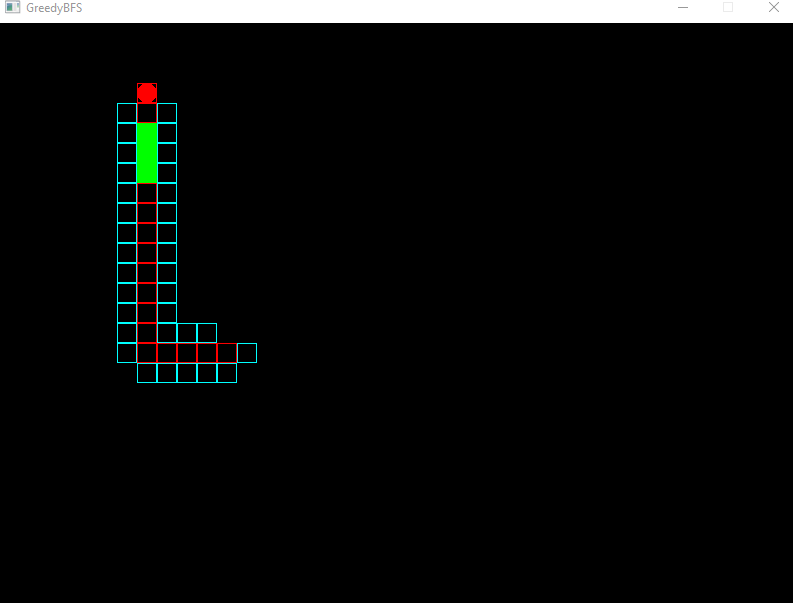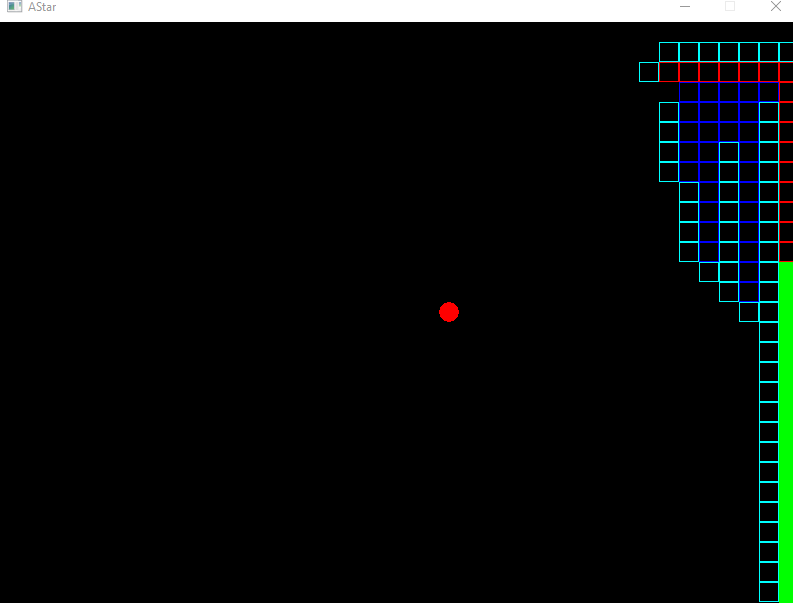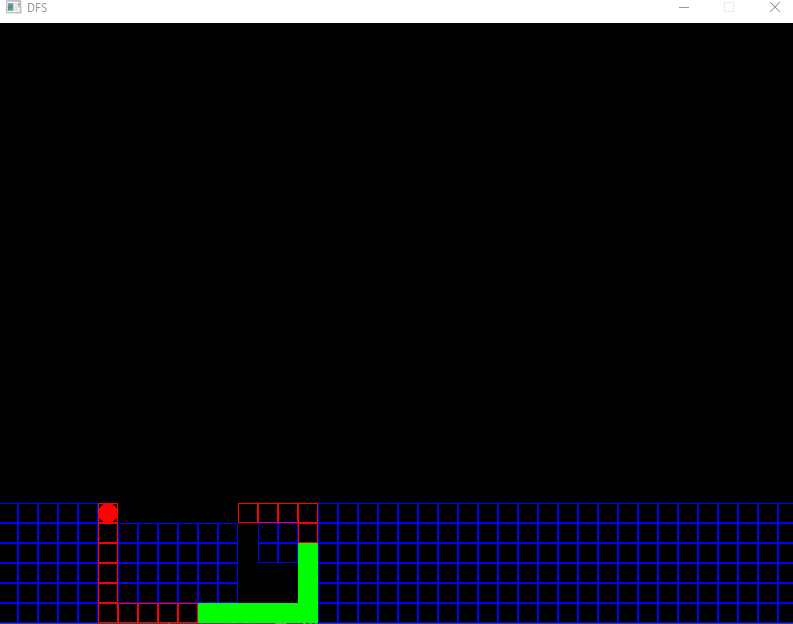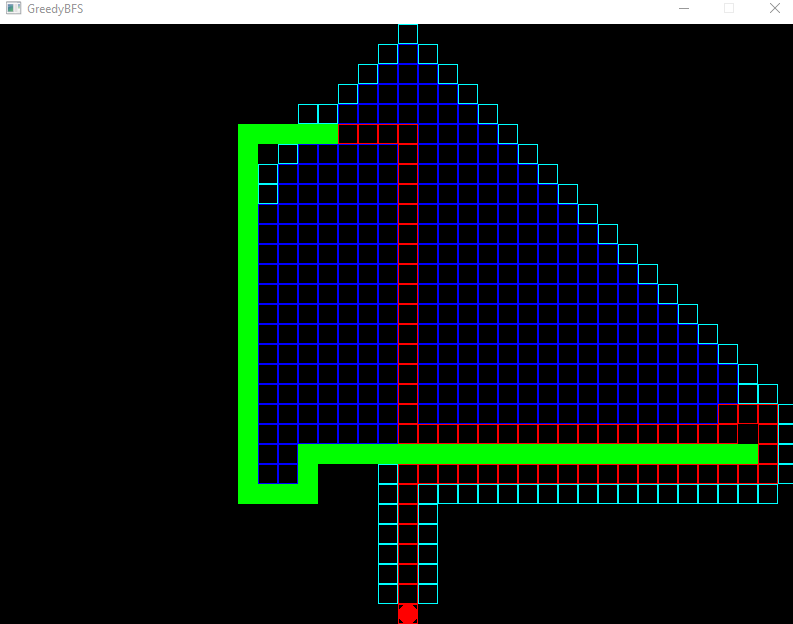Snake AI
Background
Back when I wrote this project, I was taking my Introduction to AI class in college. We learned about the main pathfinding algorithms (BFS, DFS, etc.) and I wanted to code something to enhance my understanding of them. I had written Snake in C++ recently, so I decided to automate it with a pathfinding AI.

Summary
The game plays itself using one of several shortest-path algorithms. The following algorithms are included:
- A-Star
- Greedy Best-First Search
- Breadth-First Search
- Depth-First Search
In addition to choosing which algorithm to use, you can set the screen size, time step, and whether or not to repeat the pathfinding on each frame. Once you start the game, it plays until the snake eventually crashes into itself (there is no end).
The Game Loop
On each frame, the AI performs the following steps to find a path between the snake’s head and the food:
- Get the positions of the snake’s head and the food.
- If a path hasn’t been found yet or we want to repeat the pathfinding on each frame, perform the search using the selected algorithm to find a path between the snake’s head and the food.
- The pathfinding algorithm builds a path between the given start and goal positions with the snake’s body treated as an obstacle. This path is traversed backwards to create a sequence of move commands (“LEFT”, “RIGHT”, “UP”, “DOWN”) which is given to the snake.
- The snake reads a direction from the sequence of movement commands given by the algorithm and moves in that direction.
Legend
Each algorithm’s search is drawn on the game field:
- Blue: Nodes which have already been explored (closed set).
- Cyan: Nodes which are currently being explored (frontier/open set).
- Red: The path selected by the algorithm.
Algorithms




Continuous Search
The paths selected by each algorithm ultimately become more and more convoluted as the snake grows. Since the snake’s body is a moving obstacle, the initial path selected by each algorithm can be improved as the snake’s body moves out of the way.
If the “Repeat search on each frame” option is selected, the game will re-run the path search on each game step. This is a lot slower but definitely improves the pathfinding - the snake tends to survive for longer when this option is enabled.

Statistics
The program tracks various statistics about each run in order to allow for easy comparison of the different algorithms. This gives a better idea about the time and space complexity of each search and allows you to weigh the pros and cons of different shortest-path algorithms.
Compiling & Running
First, clone the [repository](https://github.com/JOBBIN9422/SnakeAI. If you’re using a Linux-based OS, use the included makefile to build the application. If you use Windows, follow these directions instead.
The game settings:
- Time Step (Seconds): The length of each frame in seconds (default 0.05).
- Screen Width (px): The window width in pixels (default 800). Note: the game plays on a grid of 20x20 pixel squares.
- Screen Height (px): The window height in pixels (default 600).
- Search Algorithm: The pathfinding algorithm used to guide the snake (default A-Star).
- Repeat Search on Each Frame: Toggles whether or not to re-evaluate the snake’s path on each frame.
Remarks
I wrote this at a time when FLTK was the only graphical software I knew how to develop in. Definitely a great choice for writing a game it’s a GUI toolkit (the snake segments are styled UI boxes). Something like SDL2 would have been a more reasonable pick.

